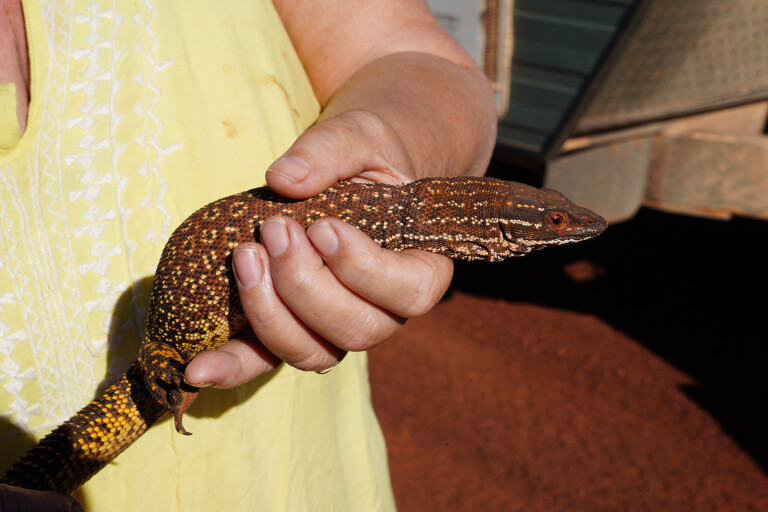
We were heading along the Heather Highway, a road that links the Great Central Road, just west of the small Aboriginal community of Warburton, to the famous Gunbarrel Highway, a track that is a ‘highway’ in name only.
Ahead of us was our convoy of nine vehicles all towing Aussie-made camper trailers, led by our son Trent of Moon Tours (www.moontours.com.au) on their Coast2Coast adventure from Ceduna in SA to Cape Keraudren in north-west WA.
Being the tail-end Charlie has become the norm for our on-and-off again career leading tag-along trips, and we were cruising along admiring the vast open spaces and distant horizon when the CB radio chattered in to life.
“Watch out, there’s a lizard on the road … pushing a tin can!”
“What?” I thought, “That’s not possible!” and after a few seconds of deliberation, I knew what it was.
Less than a minute later we saw the lizard and the can he was ‘pushing’; but he wasn’t pushing it, instead his head was trapped and without help he was doomed.

In fact, I’d seen and photographed such a trapped animal before somewhere in Central Australia, but I couldn’t remember which trip or where I could find the pic. That lizard was dead that time, his head stuck in the drink can while his exposed body was just a skeleton picked clean by crows and ants.
As we jumped out of the Patrol, the lizard, feeling our vibrations as our feet hit the dirt, turned to do a runner but ran in to the ridge of sand that lines each and every outback track and road. Before he could recover, I grabbed him, his struggles strong and insistent.
"The moral of the story is, don’t throw your rubbish away in the scrub or out of your vehicle"
But his head, shaped like an arrowhead which allowed him to slip in his tongue and then his head looking for a splash of moisture – or some ants that are almost invariably found in such drink cans – was jammed tight, the shape and his backward-facing scales not allowing him to withdraw his head from the opening.
While Viv kept the animal restrained, I went to the toolbox and grabbed a set of tin snips. What followed was a delicate operation as I cut the tin from around his neck … if lizards have necks. Once I opened the can he was initially very belligerent and bit me, but he soon settled down as I worked on the tin around his body.

He was lucky, his tough hide wasn’t even marked by the sharp edge of the drink container; and once we had him out of his predicament, we found some water and offered him a drink in our cupped hands, which he slipped his mouth in to and sucked away.
While we assumed he had been trapped for less than 24 hours (how long does a lizard survive trapped in a can?) he was still thirsty and it was a while and four handfuls of water before he looked around wondering what else was in store for him that day.
We put him down just off the edge of the road, where he stood, dazed for a few seconds, before gathering his wits about him and off in to the scrub he flew.
We got back in the Patrol, feeling pretty good that we had rescued a beautiful lizard – a magnificently marked desert monitor – our good deed done for the day.
The moral of the story is don’t throw your rubbish away in the scrub or out of your vehicle, because something as simple and seemingly innocuous as a drink can may end a native animal’s life, in what would be a pretty horrible way to die. So, crush cans and dispose of them correctly.

COMMENTS